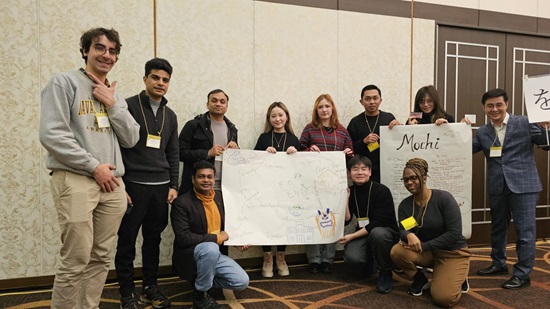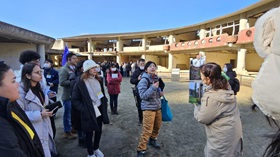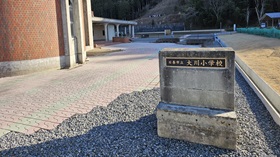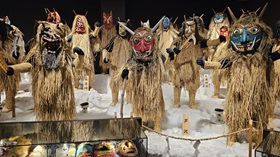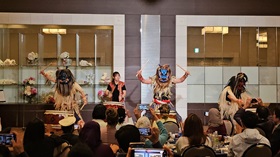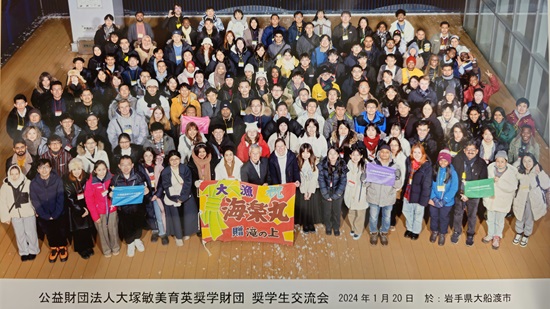Otsuka Toshimi Foundation Exchange Gathering
2024.01.20~22
During a 3-day, 2-night trip in Tohoku with students from the Otsuka Toshimi Foundation, we gathered at Sendai Airport, representing various prefectures.
The trip began with a visit to Okawa Elementary School, a poignant reminder of the impact of the March 11, 2011, earthquake and tsunami.
The damaged buildings bear witness to the loss of life of school children and staff.
Moving on to Ofunato, Iwate Prefecture, another area affected by the earthquake and tsunami simultaneously, we hear from Mr. Saito, an eyewitness to the disaster.
He shared a video capturing the impact of the tsunami, emphasizing the unpredictable nature of disasters.
Lessons learned from the two disaster-affected locations: always know where to evacuate to, carry easily accessible emergency supplies,
and prioritize evacuation to safety in the event of a disaster.
After a night's rest in Ofunato, our second-day journey led us to Chusonji Temple, a UNESCO World Heritage site in Hiraizumi, Iwate Prefecture.
Despite the rain and chilly weather, our enthusiasm remained high to explore the rich history of this Buddhist temple, founded in 850 CE by monk Jikaku Daishi.
Notably, Konjiki-do, or the "Golden Hall," built in the 12th century, stands out with its gold and silver adornments,
housing intricately sculpted Buddha statues and precious religious artifacts.
Beyond its historical and religious significance, Chusonji Temple also offers captivating natural scenery.
Lunch at Hiraizumi was a unique experience with a variety of mochi dishes, from soup to mochi of various flavors and shapes.
Afterwards, the long journey continued to the Namahage Museum in Oga, Akita Prefecture.
On the way, we were given the task of creating Haiku, adding a unique feel to our experience.
My initial impression of the Namahage statue was of a slightly scary demonic figure.
However, a visit to the Namahage Museum in Oga Shi, Akita Prefecture, reveals the rich moral values embedded in Japanese culture.
Namahage, mythological creatures depicted by local men during New Year's Eve, symbolize reminders of good behavior, obedience, and moral values.
Despite their intimidating appearance and language, Namahage's purpose is to educate and admonish,
emphasizing the importance of kindness, politeness, and hard work in Japanese society.
This experience deepened my admiration for the Japanese people and their commitment to instilling positive attitudes and traits.
During the second dinner, some of the scholarship participants performed shows from their countries and others exchanged stories, making the time very short.
After resting, the last day was filled with group discussions about experiences during the trip, exchanging ideas, and planning positive implementations in the future.
The lively discussions involved all participants respecting each other's opinions and finding solutions together.
The three-day experience was invaluable, deepening my admiration for Japanese culture and people.
Andi Masdipa
